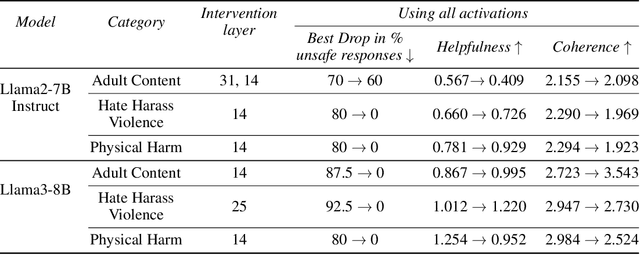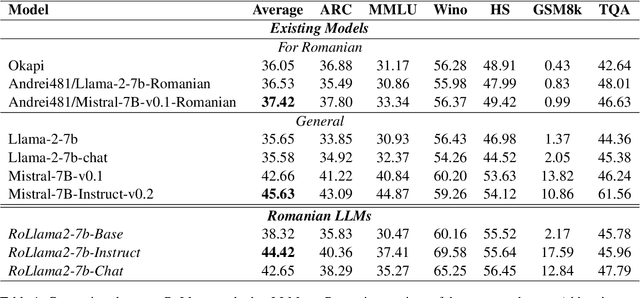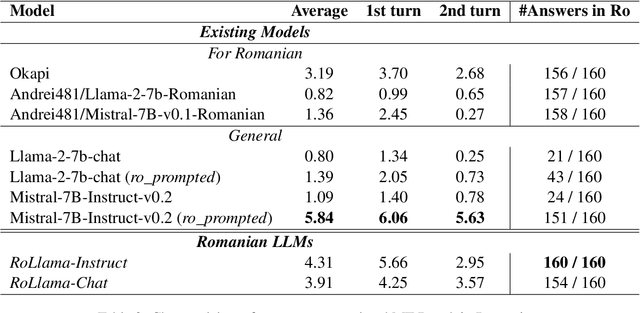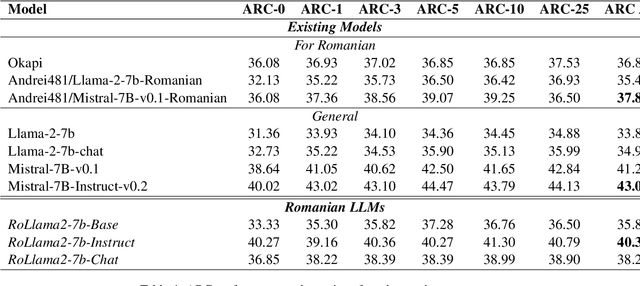Traian Rebedea
National University of Science and Technology POLITEHNICA Bucharest, NVIDIA
Meta-learning how to Share Credit among Macro-Actions
Jun 16, 2025Abstract:One proposed mechanism to improve exploration in reinforcement learning is through the use of macro-actions. Paradoxically though, in many scenarios the naive addition of macro-actions does not lead to better exploration, but rather the opposite. It has been argued that this was caused by adding non-useful macros and multiple works have focused on mechanisms to discover effectively environment-specific useful macros. In this work, we take a slightly different perspective. We argue that the difficulty stems from the trade-offs between reducing the average number of decisions per episode versus increasing the size of the action space. Namely, one typically treats each potential macro-action as independent and atomic, hence strictly increasing the search space and making typical exploration strategies inefficient. To address this problem we propose a novel regularization term that exploits the relationship between actions and macro-actions to improve the credit assignment mechanism by reducing the effective dimension of the action space and, therefore, improving exploration. The term relies on a similarity matrix that is meta-learned jointly with learning the desired policy. We empirically validate our strategy looking at macro-actions in Atari games, and the StreetFighter II environment. Our results show significant improvements over the Rainbow-DQN baseline in all environments. Additionally, we show that the macro-action similarity is transferable to related environments. We believe this work is a small but important step towards understanding how the similarity-imposed geometry on the action space can be exploited to improve credit assignment and exploration, therefore making learning more effective.
MultiMatch: Multihead Consistency Regularization Matching for Semi-Supervised Text Classification
Jun 09, 2025Abstract:We introduce MultiMatch, a novel semi-supervised learning (SSL) algorithm combining the paradigms of co-training and consistency regularization with pseudo-labeling. At its core, MultiMatch features a three-fold pseudo-label weighting module designed for three key purposes: selecting and filtering pseudo-labels based on head agreement and model confidence, and weighting them according to the perceived classification difficulty. This novel module enhances and unifies three existing techniques -- heads agreement from Multihead Co-training, self-adaptive thresholds from FreeMatch, and Average Pseudo-Margins from MarginMatch -- resulting in a holistic approach that improves robustness and performance in SSL settings. Experimental results on benchmark datasets highlight the superior performance of MultiMatch, achieving state-of-the-art results on 9 out of 10 setups from 5 natural language processing datasets and ranking first according to the Friedman test among 19 methods. Furthermore, MultiMatch demonstrates exceptional robustness in highly imbalanced settings, outperforming the second-best approach by 3.26% -- and data imbalance is a key factor for many text classification tasks.
Safety Through Reasoning: An Empirical Study of Reasoning Guardrail Models
May 26, 2025Abstract:Reasoning-based language models have demonstrated strong performance across various domains, with the most notable gains seen in mathematical and coding tasks. Recent research has shown that reasoning also offers significant benefits for LLM safety and guardrail applications. In this work, we conduct a comprehensive analysis of training reasoning-based guardrail models for content moderation, with an emphasis on generalization to custom safety policies at inference time. Our study focuses on two key dimensions: data efficiency and inference efficiency. On the data front, we find that reasoning-based models exhibit strong sample efficiency, achieving competitive performance with significantly fewer training examples than their non-reasoning counterparts. This unlocks the potential to repurpose the remaining data for mining high-value, difficult samples that further enhance model performance. On the inference side, we evaluate practical trade-offs by introducing reasoning budgets, examining the impact of reasoning length on latency and accuracy, and exploring dual-mode training to allow runtime control over reasoning behavior. Our findings will provide practical insights for researchers and developers to effectively and efficiently train and deploy reasoning-based guardrails models in real-world systems.
Aegis2.0: A Diverse AI Safety Dataset and Risks Taxonomy for Alignment of LLM Guardrails
Jan 15, 2025



Abstract:As Large Language Models (LLMs) and generative AI become increasingly widespread, concerns about content safety have grown in parallel. Currently, there is a clear lack of high-quality, human-annotated datasets that address the full spectrum of LLM-related safety risks and are usable for commercial applications. To bridge this gap, we propose a comprehensive and adaptable taxonomy for categorizing safety risks, structured into 12 top-level hazard categories with an extension to 9 fine-grained subcategories. This taxonomy is designed to meet the diverse requirements of downstream users, offering more granular and flexible tools for managing various risk types. Using a hybrid data generation pipeline that combines human annotations with a multi-LLM "jury" system to assess the safety of responses, we obtain Aegis 2.0, a carefully curated collection of 34,248 samples of human-LLM interactions, annotated according to our proposed taxonomy. To validate its effectiveness, we demonstrate that several lightweight models, trained using parameter-efficient techniques on Aegis 2.0, achieve performance competitive with leading safety models fully fine-tuned on much larger, non-commercial datasets. In addition, we introduce a novel training blend that combines safety with topic following data.This approach enhances the adaptability of guard models, enabling them to generalize to new risk categories defined during inference. We plan to open-source Aegis 2.0 data and models to the research community to aid in the safety guardrailing of LLMs.
GIT-CXR: End-to-End Transformer for Chest X-Ray Report Generation
Jan 05, 2025



Abstract:Medical imaging is crucial for diagnosing, monitoring, and treating medical conditions. The medical reports of radiology images are the primary medium through which medical professionals attest their findings, but their writing is time consuming and requires specialized clinical expertise. The automated generation of radiography reports has thus the potential to improve and standardize patient care and significantly reduce clinicians workload. Through our work, we have designed and evaluated an end-to-end transformer-based method to generate accurate and factually complete radiology reports for X-ray images. Additionally, we are the first to introduce curriculum learning for end-to-end transformers in medical imaging and demonstrate its impact in obtaining improved performance. The experiments have been conducted using the MIMIC-CXR-JPG database, the largest available chest X-ray dataset. The results obtained are comparable with the current state-of-the-art on the natural language generation (NLG) metrics BLEU and ROUGE-L, while setting new state-of-the-art results on F1 examples-averaged, F1-macro and F1-micro metrics for clinical accuracy and on the METEOR metric widely used for NLG.
Towards Inference-time Category-wise Safety Steering for Large Language Models
Oct 02, 2024



Abstract:While large language models (LLMs) have seen unprecedented advancements in capabilities and applications across a variety of use-cases, safety alignment of these models is still an area of active research. The fragile nature of LLMs, even models that have undergone extensive alignment and safety training regimes, warrants additional safety steering steps via training-free, inference-time methods. While recent work in the area of mechanistic interpretability has investigated how activations in latent representation spaces may encode concepts, and thereafter performed representation engineering to induce such concepts in LLM outputs, the applicability of such for safety is relatively under-explored. Unlike recent inference-time safety steering works, in this paper we explore safety steering of LLM outputs using: (i) category-specific steering vectors, thereby enabling fine-grained control over the steering, and (ii) sophisticated methods for extracting informative steering vectors for more effective safety steering while retaining quality of the generated text. We demonstrate our exploration on multiple LLMs and datasets, and showcase the effectiveness of the proposed steering method, along with a discussion on the implications and best practices.
"Vorbeşti Româneşte?" A Recipe to Train Powerful Romanian LLMs with English Instructions
Jun 26, 2024Abstract:In recent years, Large Language Models (LLMs) have achieved almost human-like performance on various tasks. While some LLMs have been trained on multilingual data, most of the training data is in English; hence, their performance in English greatly exceeds other languages. To our knowledge, we are the first to collect and translate a large collection of texts, instructions, and benchmarks and train, evaluate, and release open-source LLMs tailored for Romanian. We evaluate our methods on four different categories, including academic benchmarks, MT-Bench (manually translated), and a professionally built historical, cultural, and social benchmark adapted to Romanian. We argue for the usefulness and high performance of RoLLMs by obtaining state-of-the-art results across the board. We publicly release all resources (i.e., data, training and evaluation code, models) to support and encourage research on Romanian LLMs while concurrently creating a generalizable recipe, adequate for other low or less-resourced languages.
Unsupervised Extraction of Dialogue Policies from Conversations
Jun 21, 2024Abstract:Dialogue policies play a crucial role in developing task-oriented dialogue systems, yet their development and maintenance are challenging and typically require substantial effort from experts in dialogue modeling. While in many situations, large amounts of conversational data are available for the task at hand, people lack an effective solution able to extract dialogue policies from this data. In this paper, we address this gap by first illustrating how Large Language Models (LLMs) can be instrumental in extracting dialogue policies from datasets, through the conversion of conversations into a unified intermediate representation consisting of canonical forms. We then propose a novel method for generating dialogue policies utilizing a controllable and interpretable graph-based methodology. By combining canonical forms across conversations into a flow network, we find that running graph traversal algorithms helps in extracting dialogue flows. These flows are a better representation of the underlying interactions than flows extracted by prompting LLMs. Our technique focuses on giving conversation designers greater control, offering a productivity tool to improve the process of developing dialogue policies.
OpenLLM-Ro -- Technical Report on Open-source Romanian LLMs
May 17, 2024



Abstract:In recent years, Large Language Models (LLMs) have achieved almost human-like performance on various tasks. While some LLMs have been trained on multilingual data, most of the training data is in English. Hence, their performance in English greatly exceeds their performance in other languages. This document presents our approach to training and evaluating the first foundational and chat LLM specialized for Romanian.
CantTalkAboutThis: Aligning Language Models to Stay on Topic in Dialogues
Apr 04, 2024Abstract:Recent advancements in instruction-tuning datasets have predominantly focused on specific tasks like mathematical or logical reasoning. There has been a notable gap in data designed for aligning language models to maintain topic relevance in conversations - a critical aspect for deploying chatbots to production. We introduce the CantTalkAboutThis dataset to help language models remain focused on the subject at hand during task-oriented interactions. It consists of synthetic dialogues on a wide range of conversation topics from different domains. These dialogues are interspersed with distractor turns that intentionally divert the chatbot from the predefined topic. Fine-tuning language models on this dataset helps make them resilient to deviating from the role assigned and improves their ability to maintain topical coherence compared to general-purpose instruction-tuned LLMs like GPT-4-turbo and Mixtral-Instruct. Additionally, preliminary observations suggest that training models on this dataset also enhance their performance on fine-grained instruction following tasks.
 Add to Chrome
Add to Chrome Add to Firefox
Add to Firefox Add to Edge
Add to Edge